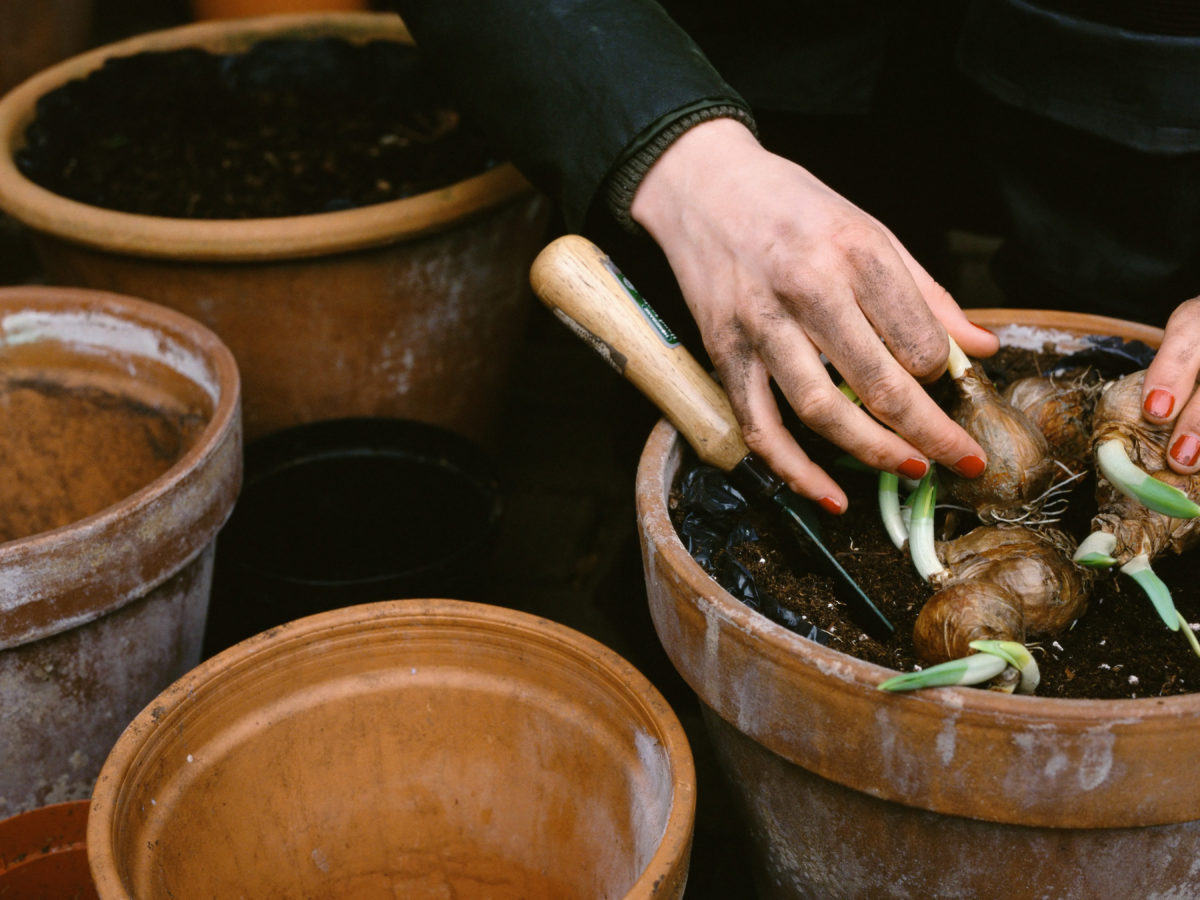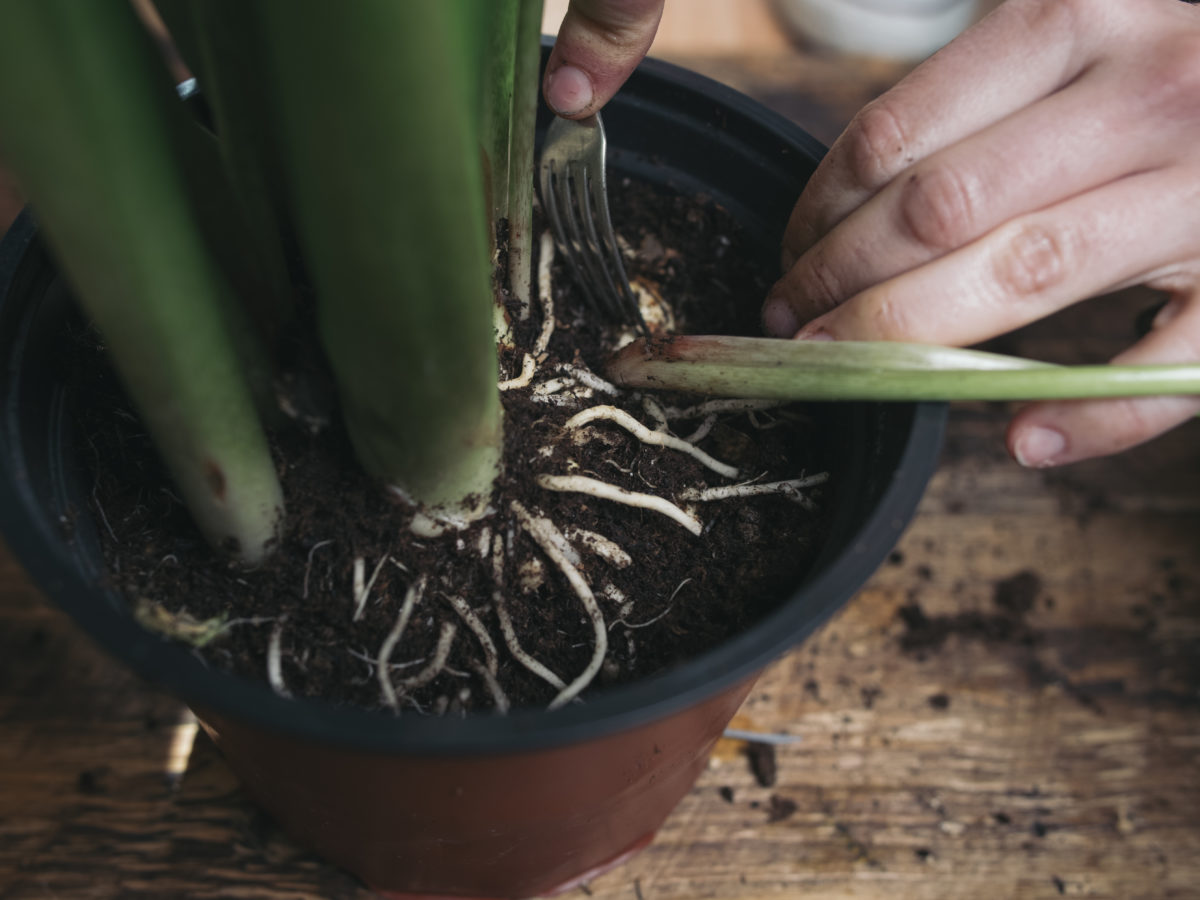
How to Fill Your Home and Garden with Lots of Plants for Next to Nothing
Sneaky plant bargains, multiplying plants, and other tricks for getting greener while saving your green.

David Fenton
To me, there is no thrill like a cheap thrill. I love finding deep discounts of pretty much any type. (Seriously, one time I bought 100 lbs. of sugar in one go simply because it was under $30. Did I need that much sugar? Irrelevant. I rode the high of that bargain for months.) Even if you’re not the “coupon-queen your way to the apocalypse-stockpile of your dreams” type, it’s worth having a few tricks up your sleeve for saving on plants, because they can be costly— yet unlike a hundred pounds of sugar, plants improve your indoor air quality, make your shelves look prettier, and even when they’re half-expired they can be brought back from the brink. Try these cheap plant hacks and you won’t just save money—in some cases, you’ll be rescuing plants from a long dirt nap in a landfill.
Tip #1: Hit the Discount Stores
https://www.instagram.com/p/B1M8-r-Bjgz/?utm_source=ig_web_button_share_sheetThis one seems kind of obvious to a cheapskate smart shopper like me, but I think people forget to check discount grocery stores like Grocery Outlet and Winco for plants. Nearly thirty years ago, big box bargain stores like Costco started adding houseplants to their inventory, and now even orchids can be found at big box stores, alongside cases of La Croix and corn dogs. If you have a big garden project that’s going to require lots of plants, this will save you tons of money.
Bargain-shop for all kinds of plants, but especially in the fall, and especially bulbs. Bulbs are fairly forgiving about sitting around for awhile, and as long as you get them in the ground soon-ish, you’ll get pretty good results. (Confession: a not-insignificant percentage of the bulbs in my yard came from a clearance rack.) You’re not always going to find anything particularly rare or unusual—one time I found Tigridia and Eucomis on a Fred Meyer clearance rack and I bought them out—but if you just need to fill in some gaps in your landscape, paperwhites, callas, tulips, and lilies can fit the bill nicely.

Photo by ImageSource / Getty Images
One important thing, though: be sure to inspect the plants carefully before you buy. Even if they’re dirt cheap, it’s a waste of money to buy shriveled bulbs or a Philodendron covered in spider mites! Another caveat: discount and big box stores typically don’t have experienced horticulturists on staff, so if it’s expertise and hands-on guidance (or specialty plants) that you need , stick to your friendly neighborhood plant shops.
Tip #2: Go Ahead, Give Proplifting a Shot
https://www.instagram.com/p/BwGWxdkl4NZ/?utm_source=ig_web_button_share_sheetProplifting is one of my favorite cheap plant hacks because it adds a slightly subversive edge to the already-delightful practice of saving money on plants. If you’re shopping at the hardware store and happen to see a few succulent or begonia leaves on the floor, ask one of the employees if it’s cool to take them home. This is not to be confused with breaking off cuttings or leaves from plants at the store, which I’m sure I don’t have to tell you is actually stealing.
To get free succulents, just set the broken-off/fallen-off leaves on bare dirt and they’ll start growing roots. When the new little pups start growing, they’ll orient their roots into the soil without any help; they absorb moisture from their mom leaf until they’re ready to make it on their own. In case you have doubts that this will work, I offer this anecdote: one time I found a whole broken-off branch of a jade plant growing in someone’s yard in San Luis Obispo, threw it in the back of my pickup truck, drove it home to Portland, and—days later—stuck it in a pot of soil. It just shrugged its shoulders and grew its roots back like nothing had ever happened. I had that thing for a decade!
https://www.instagram.com/p/B1GrKymAMTs/?utm_source=ig_web_button_share_sheetIf rescuing broken plant bits off the floor feels a tad too extreme, good old-fashioned propagation will work just fine. Houseplant propagation is pretty straightforward, since so many of the plants we grow indoors are in the Araceae family, which is wont to root adventitiously—seriously, roots will grow right out of their stems! Many houseplant cuttings (and herbs) will root right in a glass of water without any rooting hormone or anything. Others take slightly more effort, but learning some basic propagation techniques will pay off in dividends. You can fill your windows with free houseplants, or pot up babies to give as gifts (bonus tip: check thrift stores for funky vintage pots or dress up a plain terra cotta pot with some metallic paint).
Tip #3 Divide Your Perennials

Photo by Westend61 / Getty Images
Many garden perennials can be divided into multiple plants; dahlias, hostas, pineapple sage, and even pitcher plants benefit from being split up every few years. For best results, divide spring-blooming perennials in fall, and fall-blooming perennials in spring. Give them a little food when you replant them, and they’ll thank you for the extra leg room by exploding with new growth.
Tip #4: Take a Chance on the Sad Plant Rack
https://www.instagram.com/p/BzMqFCMH1wi/?utm_source=ig_web_button_share_sheetAnyone with an even remotely nurturing bent already knows this cheap plant hack: nurse a sad plant baby back to health. Every nursery has a shelf with deeply discounted plants that need some love, and every time I walk past said shelf I swear I hear Sarah McLachlan’s “Angel.” It’s probably not really worth it for annuals that only have a season or two, but perennials can often be brought back from the brink of death by simply pruning them way back and giving them some water. I have an Angelica that couldn’t have looked more pitiful when I brought it home, and now it’s one of the happiest plants in the garden!
Related, if you hit the grocery store plant aisle on the day after a flowery holiday like Mother’s Day or Valentine’s Day you can usually score potted planted like Easter lilies and pink cyclamens for a song—once you take off the silly heart-patterned packaging, it’s just a regular plant.
Tip #5: Rescue Plants From Your Neighborhood
https://www.instagram.com/p/BDbBHMWglHA/?utm_source=ig_web_button_share_sheetIn areas where new development is rampant (like Portland, Oregon), older buildings are razed daily. Ask if you can dig up unwanted plants before they’re flattened (I once scored some nice, mature euphorbias when an old office building got creamed to make way for a new apartment complex). And lurk local sites like NextDoor and Craigslist for free plants—you never know when someone has some extra greenery that they can’t bear to waste. When I’m cleaning up my garden, I’ll often pot up oregano and mint (which invades all the weedy corners of my yard) and put it out on the sidewalk with a “free” sign. My next-door neighbor did the same thing in the spring when she realized she’d started way too many cherry tomatoes.
Tip #6: Plant Your Kitchen Scraps

Whenever garlic or shallots sprout in my kitchen, instead of tossing them into the compost bucket, I plant them in my garden. Same goes for sprouted potatoes and sweet potatoes—I just cut off the sprouts and stick them in the dirt. You can plant an avocado pit, a carrot “fern,” and the root end of celery, and that’s just the beginning! Even if you don’t like eating carrot tops, they’re kind of nice to look at and will eventually produce pretty flowers. If you find a new winter squash that you love, save some seeds and plant them in the spring. Sprout a cutting of thyme, rosemary, basil, and pretty much anything in the mint family in a jar of water and then plant it for a dirt-cheap herb garden.
